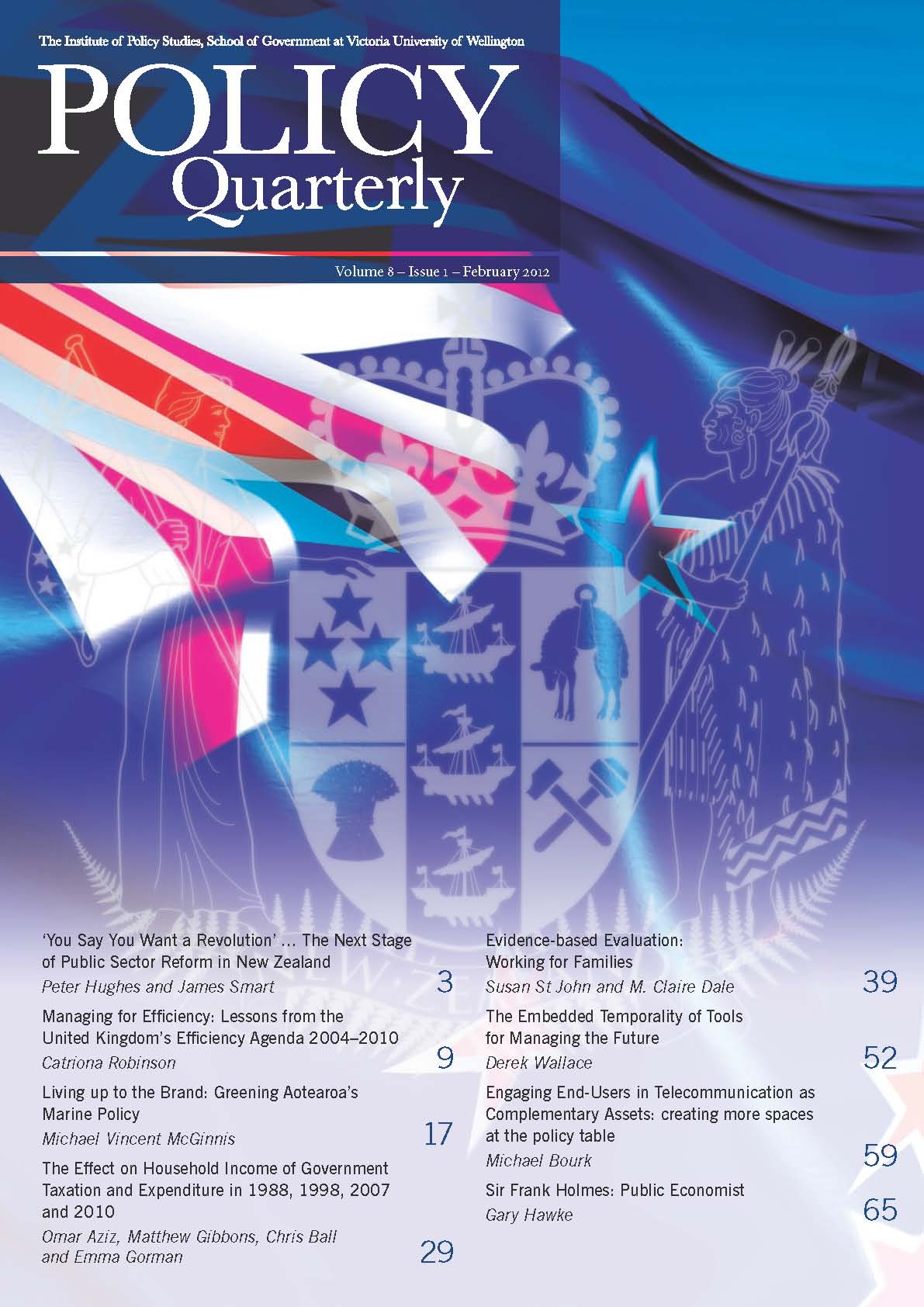Managing for efficiency: lessons from the United Kingdom’s Efficiency Agenda 2004–2010
DOI:
https://doi.org/10.26686/pq.v8i1.4405Keywords:
public spending, fiscal constraint, State Services Commission, Value for Money programme (VfM), National Audit Office (NAO), TreasuryAbstract
The call for greater efficiency in public spending is not new, but today has additional force: how can we deliver more for (even) less? A combination of high public expectations about service quality and prolonged fiscal constraint requires New Zealand government departments to focus on the highest spending priorities, find more innovative ways to deliver services, and create efficiencies wherever possible (State Services Commission, 2010a, 2010b). The urgent need to refocus on providing smarter, better public services for less was a consistent theme over the past few years in public statements made by the previous secretary to the Treasury, John Whitehead. Whitehead identified developments in the public sector in the United Kingdom as a potential model for New Zealand, particularly the speed with which ‘new thinking [was] converted into action’ in the pursuit of efficiency (Whitehead, 2010), and referenced in particular a programme launched in the UK in 2004 as an innovative public reform initiative from which New Zealand might learn (Whitehead, 2009a).
Downloads
Downloads
Published
Issue
Section
License
Permission: In the interest of promoting debate and wider dissemination, the IGPS encourages use of all or part of the articles appearing in PQ, where there is no element of commercial gain. Appropriate acknowledgement of both author and source should be made in all cases. Please direct requests for permission to reprint articles from this publication to Policy-Quarterly@vuw.ac.nz.



